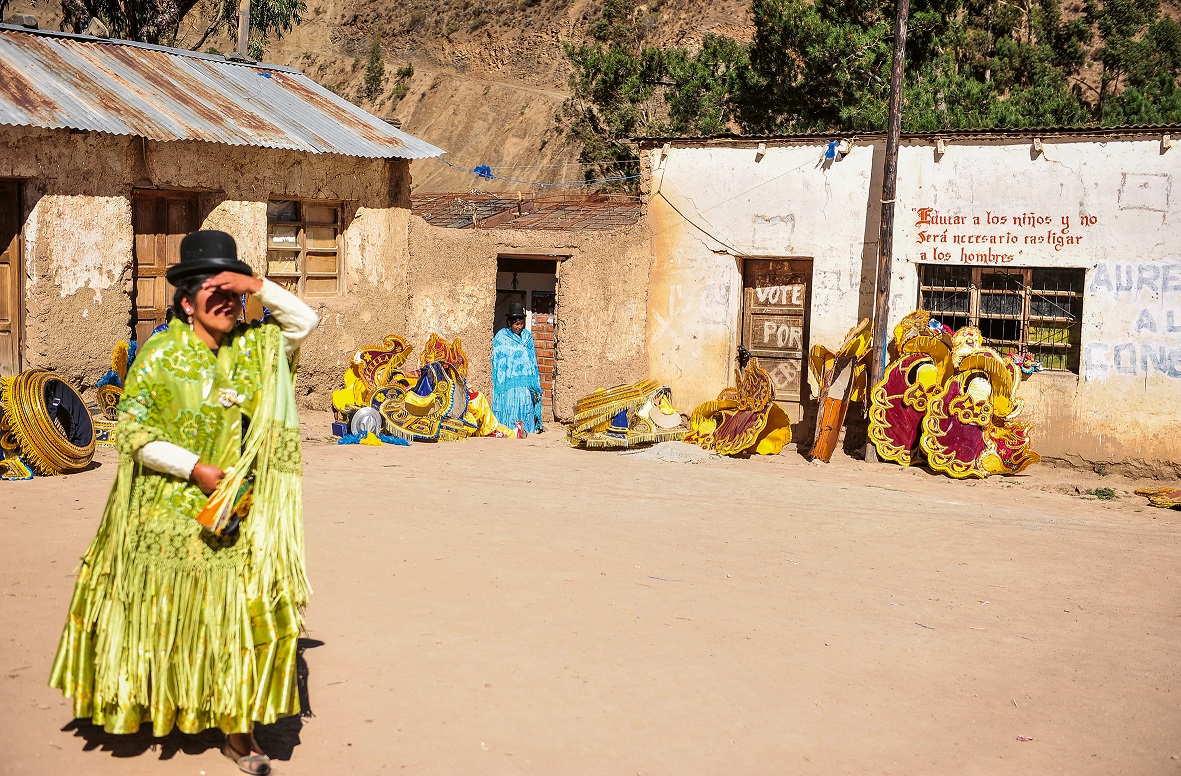Milan, the capital of European fashion, is the city where Daniele Tamagni was born in 1975. “Style is life”, a celebration of his off-the-catwalk fashion photograpohy, is dazzlingly eye-catching.

Sean Sheehan
In Kami, a tungsten mining village in the mountains Bolivia, Tamagni saw grinding poverty up close when he travelled there in 2009. He also discovered how the women found temporary escape from the greyness of their situation in dresses of extraordinary colour that paid homage to the Andean traditions of the Quechua and Aymara people.
Not surprisingly, the bouffant-style skirts of cholitas also caught his eye. Véronique Marchand, introducing his photos of the Bolivian wrestlers, notes how they like to prove their independence from men ‘as mistresses of the home, in their work and in their political and union activism’. Far from being contained within the ropes of a wrestling ring – witness Néilda Sifuentes, appointed minister of economic development in 2019 – they represent a progressive and emancipatory element in Bolivian society.
Tamagni first came to international notice when “Gentlemen of Bacongo” was published in 2009, his stunning photographs of sapeurs, dandies in the Congo, whose style of dress demonstrated a sui generis taste for dressing that made professional fashion models with their supercilious pouting look like amateurs.
 Alain Mabanckou writes tellingly in “Style is life” about the politics of the Congolese art of dressing, raising the question as to whether sapeurs, perhaps inspired by ‘the outfits of colonists, always impeccably with their nice colonial helmets’, are party to a depersonalization of Africans as puppets of the old colonist: ‘A Black man wearing a white mask’. This may be true but Tamagni was enthused by their passion for a theatrical excess and he found a resonance of this in Bolivia.
Alain Mabanckou writes tellingly in “Style is life” about the politics of the Congolese art of dressing, raising the question as to whether sapeurs, perhaps inspired by ‘the outfits of colonists, always impeccably with their nice colonial helmets’, are party to a depersonalization of Africans as puppets of the old colonist: ‘A Black man wearing a white mask’. This may be true but Tamagni was enthused by their passion for a theatrical excess and he found a resonance of this in Bolivia.
Fashion in post-apartheid South Africa, at least at street level, does not fall into this trap, as one might expect from a country that has brought a case of genocide against Israel for its murderous campaign in Gaza. South Africa’s young people, not finding the freedom from poverty that they hoped for, are photographed by Tamagni to show how their alienation finds expression in the way they dress.
In 2014, Tamagni was diagnosed with a rare type of leukaemia but he continued to work. The following year, he travelled to Kenya during a pause in the illness and there is a moving account at the end of this book of his life and the battle with cancer that led to his death in 2017.
“Style is life” is testimony to sartorial pride and exuberance in ways far removed from the catwalks of fashion houses in Milan, London or Paris.
 Tamagni was drawn to the margins of society but commodification is ubiquitous and it is dismaying to know that his images have inspired luxury fashion designers. Luxury was not on his agenda when he travelled to South America, Africa and elsewhere.
Tamagni was drawn to the margins of society but commodification is ubiquitous and it is dismaying to know that his images have inspired luxury fashion designers. Luxury was not on his agenda when he travelled to South America, Africa and elsewhere.
Daniele Tamagni’s “Style is life” is published by Kehrer.
(Photos supplied by the publisher.)












.jpg)












